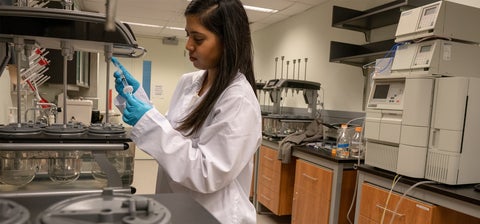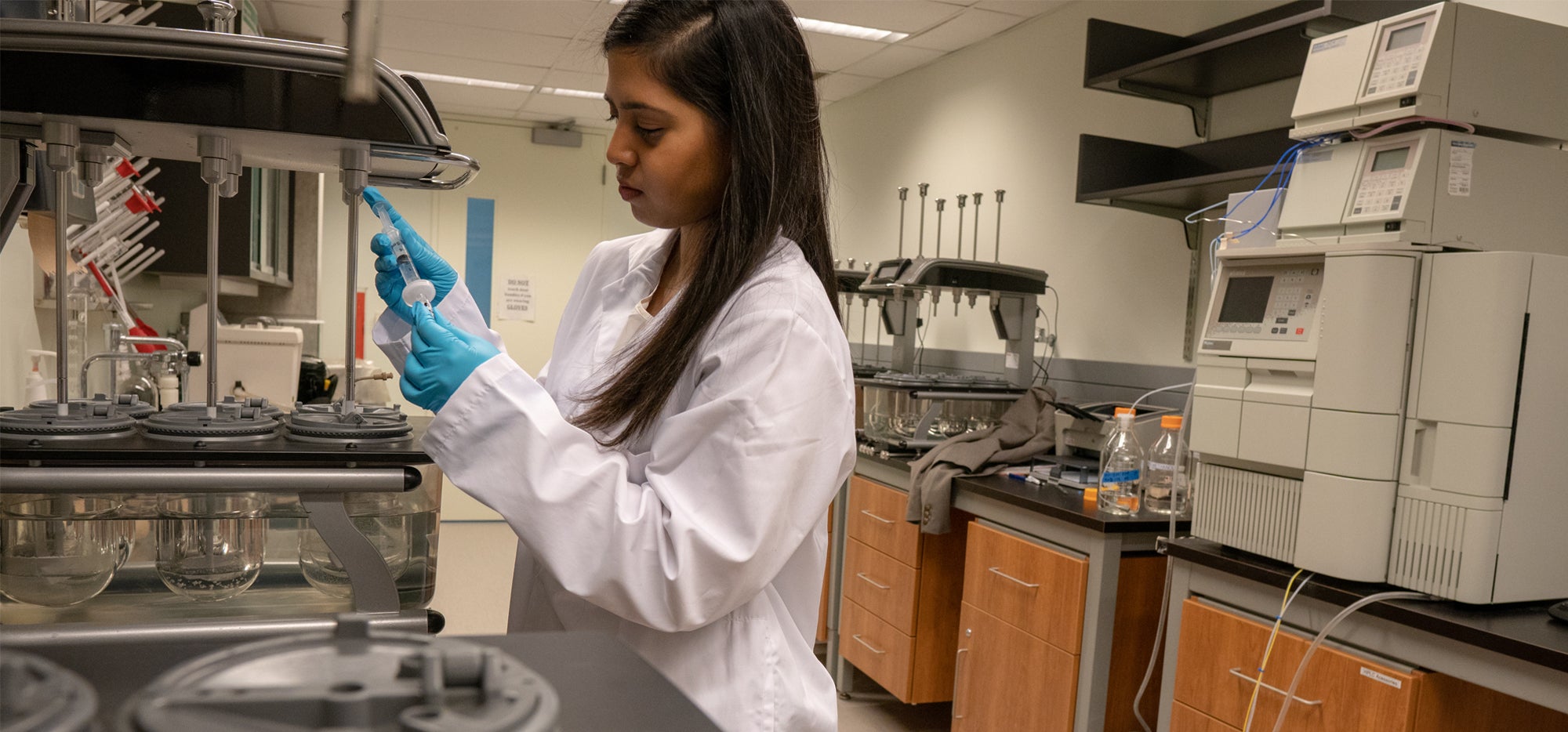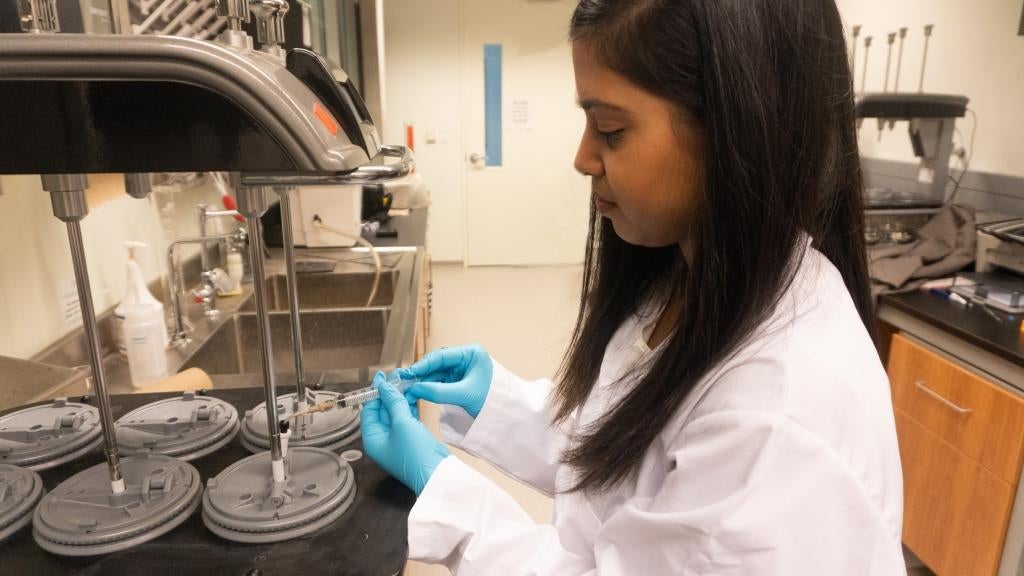
Pharmacy PhD candidate develops novel medication formulation to deliver 11 compounds at once

PhD candidate Shannon Callender envisioned a solution to this challenge: what if you could take all your medications at once in a single pill?
“There are many options for delivering multiple medications at once, from nanotechnology vehicles to transdermal patches,” Shannon explains.
But we took into account the fact that many drugs today are oil based and have lipophilic qualities – that is that they tend to combine with or dissolve in fats. Knowing this, we thought what kind of lipid-based drug delivery system could we use?
The goal was to deliver multiple compounds at once. But Shannon also knew that other medications used for common conditions could by hydrophilic, meaning that they dissolved in water instead of fats. A truly effective multi-drug therapy required a formulation that could deliver both hydrophilic and lipophilic medications at once, while ensuring that the patient would actually absorb the medication when taken.
She turned to a material called microemulsions as a solution to delivering both hydro- and lipophilic compounds. Microemulsions are tiny mixtures of oil, water, and a substance called a surfactant which allows the oil and water to mix. Microemulsions are so small, they’re measured at the nanoscale, and this extremely small droplet size makes them effective for medication delivery, as a small droplet size tends to lead good absorption of a drug once inside the body.
“Microemulsions have been used for drug delivery in other medications, though they have never been engineered to hold many drugs at once,” Shannon says. “The literature suggests that researchers are cautious about using microemulsions, typically including only one or two active ingredients due to the unpredictable nature of these systems, concerns around droplet sizes and the complexity of multi-drug formulations in general.”
Shannon wasn’t daunted though. Together with her supervisor, Prof. Shawn Wettig, she partnered with pharmaceutical company Catalent Inc. based in Windsor and experimented with designing a microemulsion that could replicate one of Catalent’s existing prenatal supplements. The supplement was ideal for her research because it contained a blend of eleven lipophilic and hydrophilic compounds.

“In any multi-drug formulation, different compounds will have different preferences,” she explains. “You have to account for the unique needs of each substance, their pH preference, temperature preference, light sensitivity and more.”
In the lab, Shannon used commercially available surfactants to design a variety of microemulsions, loading them up with all eleven compounds and assessing how the microemulsion performed. She measured its overall size and tested the drug recovery percentages of various compounds. Eventually, she arrived at a successful design. In combination with Prof Wettig’s surfactant expertise, she worked to identify what specific surfactant properties were responsible for the formation of these microemulsion, multi-drug formulations.

Though Shannon is only working with vitamins at this stage, her research represents the first step towards using microemulsions as a delivery system for multi-drug therapies featuring many drugs. Her research was recognized in 2018 with Gattefosse Canada’s CSPS Award in Lipid Based Drug Delivery, making it the first time a University of Waterloo student has received this prestigious national award.